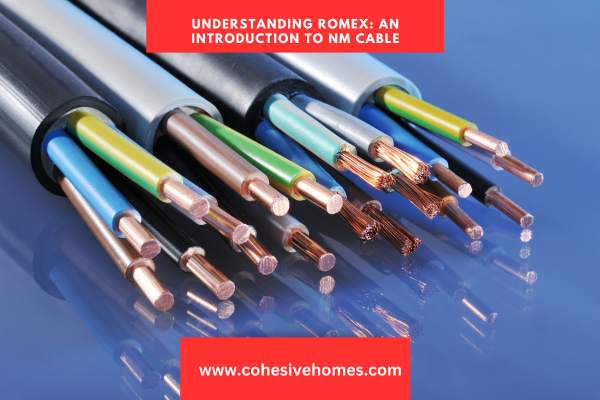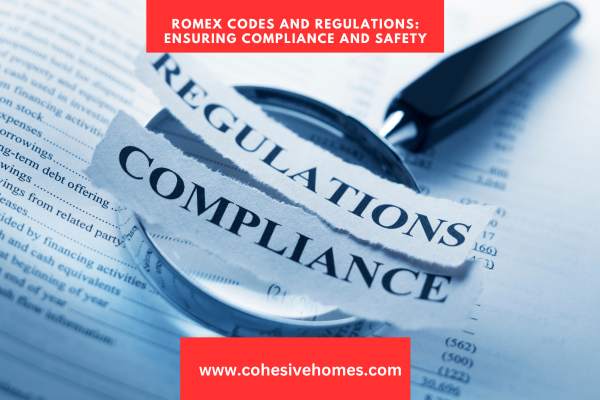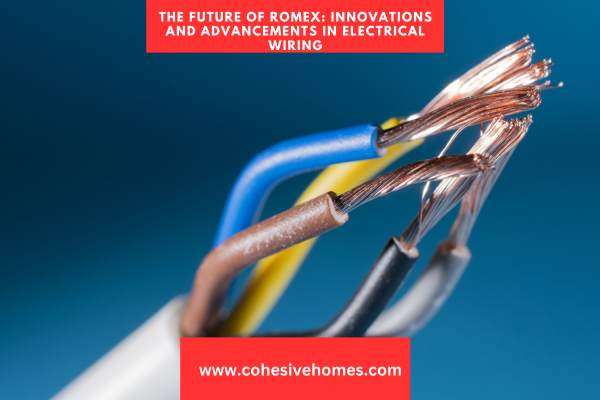When it comes to electrical wiring, Romex stands as a household name, quietly powering our homes, offices, and buildings with reliability and efficiency. Romex, often referred to as non-metallic sheathed cable (NM cable), has become the go-to wiring choice for residential and commercial applications across the United States. Its widespread usage can be attributed to its unique composition and remarkable versatility.
In this blog post, we delve into the world of Romex and shed light on what makes it the preferred wiring solution for countless electricians and homeowners alike.
We will explore the construction, benefits, and common applications of Romex, empowering you with a deeper understanding of this essential component of our modern electrical systems.
So, join us on this enlightening journey as we unravel the mysteries behind Romex, the unsung hero that keeps our homes illuminated, our devices connected, and our lives powered.
Understanding Romex: An Introduction to NM Cable

Electricians widely use Romex, also known as non-metallic sheathed cable (NM cable), as a type of electrical wire for various residential and commercial wiring applications.
Multiple copper conductors, typically insulated with a thermoplastic material like PVC (polyvinyl chloride), comprise Romex.
Romex cables typically come in various sizes and configurations to accommodate different voltage and current requirements.
They are designed to safely transmit electrical power from the main electrical panel to outlets, switches, and appliances throughout a building.
The Composition of Romex: Unveiling Its Inner Layers

The construction of Romex involves several layers that work together to provide insulation and protection.
At the core of the cable are the conductors, which carry the electrical current. Insulation surrounds the conductors, typically color-coded for identification purposes.
Over the insulation, a non-metallic sheathing is applied, providing mechanical protection and resistance against moisture and abrasion.
This outer sheathing is often made of PVC or another suitable thermoplastic material.
The combination of these layers ensures that Romex is durable, safe, and able to withstand the rigors of electrical installations.
Benefits of Romex: Why It’s the Preferred Wiring Choice

Romex offers several advantages that contribute to its popularity in electrical wiring projects.
Firstly, it is highly flexible, allowing for easy installation even in tight spaces or complex wiring configurations.
Additionally, Romex is cost-effective compared to other wiring options, making it a budget-friendly choice for both professionals and homeowners.
Its insulation properties provide excellent electrical performance and reduce the risk of short circuits or electrical faults.
Furthermore, Romex is compatible with a wide range of electrical systems, making it a versatile solution for various applications.
Romex Applications: Where and How It’s Used

Romex finds extensive use in residential and commercial buildings for a multitude of electrical applications.
It is commonly employed in wiring circuits for lighting fixtures, outlets, and switches throughout homes, apartments, and offices.
Additionally, Romex finds utility in wiring heating and cooling systems, kitchen appliances, and other electrical devices.
Its flexibility and ease of installation make it suitable for both new construction and renovation projects.
However, it is essential to adhere to local electrical codes and regulations when using Romex to ensure proper installation and compliance with safety standards.
Romex Installation: Best Practices and Safety Considerations

Proper installation of Romex is crucial for ensuring electrical safety and optimal performance.
This section discusses important guidelines and best practices for installing Romex, including the correct methods for securing the cable, maintaining proper bend radius, and avoiding damage during installation.
It also emphasizes the significance of turning off power before working with Romex and following electrical codes and regulations to prevent hazards such as electrical shocks or fires.
By following these safety considerations and installation practices, you can ensure the longevity and reliability of your electrical wiring system.
Romex Codes and Regulations: Ensuring Compliance and Safety

Compliance with electrical codes and regulations is of utmost importance when working with Romex.
This section provides an overview of the relevant codes and regulations that govern the installation and use of Romex, including National Electrical Code (NEC) standards and local building codes.
It highlights the importance of obtaining necessary permits, using appropriate wire gauges, and following specific guidelines for different types of applications.
By adhering to these codes and regulations, electricians and homeowners can ensure the safety, reliability, and legality of their electrical installations.
Troubleshooting Romex: Common Issues and Solutions

Like any electrical system, Romex can encounter issues over time. This section addresses common problems that may arise with Romex wiring, such as faulty connections, insulation damage, or circuit overloads.
It provides troubleshooting tips and solutions to help diagnose and resolve these issues effectively.
Additionally, it emphasizes the importance of consulting a qualified electrician for complex or potentially dangerous electrical problems to ensure proper resolution.
Upgrading Your Electrical System with Romex: What You Need to Know

For those considering upgrading or renovating their electrical systems, this section provides essential information and considerations.
It covers topics such as assessing the capacity of existing wiring, determining the appropriate wire gauge for specific circuits, and understanding the process of replacing or adding Romex wiring to an existing system.
By understanding the necessary steps and factors involved, homeowners can make informed decisions and work with professionals to successfully upgrade their electrical infrastructure.
The Future of Romex: Innovations and Advancements in Electrical Wiring

As technology continues to evolve, so does the field of electrical wiring.
This section explores potential innovations and advancements in Romex and electrical wiring as a whole.
It highlights emerging trends such as smart home integration, energy efficiency, and sustainable wiring solutions.
By staying informed about these developments, readers can anticipate future possibilities and make informed choices when it comes to their electrical systems.
Conclusion

Romex, the unassuming hero of our electrical systems, has proved itself as a reliable and versatile wiring solution for both residential and commercial applications.
Through our exploration, we have gained a deeper understanding of its construction, benefits, applications, and best practices for installation.
We’ve discovered that Romex’s flexibility, affordability, and compatibility make it the preferred choice of electricians and homeowners alike.
By following safety considerations, adhering to electrical codes and regulations, and troubleshooting common issues, we can ensure the optimal performance and longevity of our Romex installations.
Whether you’re embarking on a new wiring project or considering an upgrade to your existing electrical system, Romex offers a practical and efficient solution.
As we look to the future, the potential for innovation in Romex and electrical wiring is promising.
Advancements such as smart home integration and sustainable wiring solutions open up new possibilities for enhanced functionality, energy efficiency, and environmental consciousness.
So, the next time you flick on a light switch, charge your devices, or power your appliances, remember the unsung hero behind it all—Romex.
Its unassuming presence ensures our homes stay illuminated, our devices stay connected, and our lives stay powered.
With a deeper understanding of Romex, we can appreciate the importance of this essential electrical wire and make informed decisions about our electrical systems.
FAQS
Can Romex be used outdoors?
No, it is not advisable to use Romex outdoors due to its vulnerability to moisture and extreme weather conditions.
Can Romex be used in commercial or industrial settings?
Primarily designed for residential applications, Romex may not fulfill the requirements for commercial or industrial projects. Consult an electrician for appropriate wiring options.
Can Romex be installed in walls or ceilings?
You can install Romex in walls or ceilings by following electrical codes and guidelines, which include using proper wiring methods and securing it to studs or joists.
